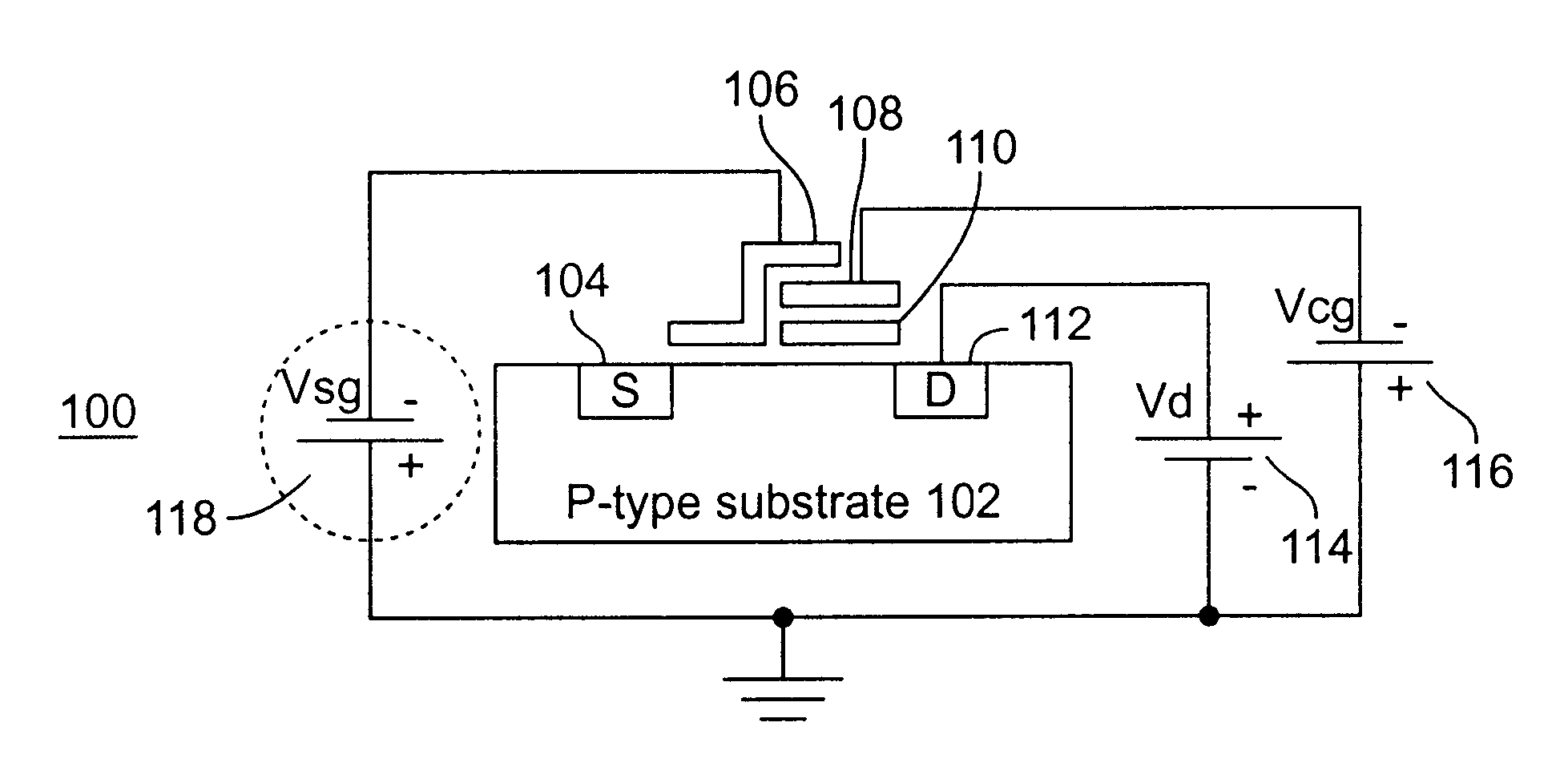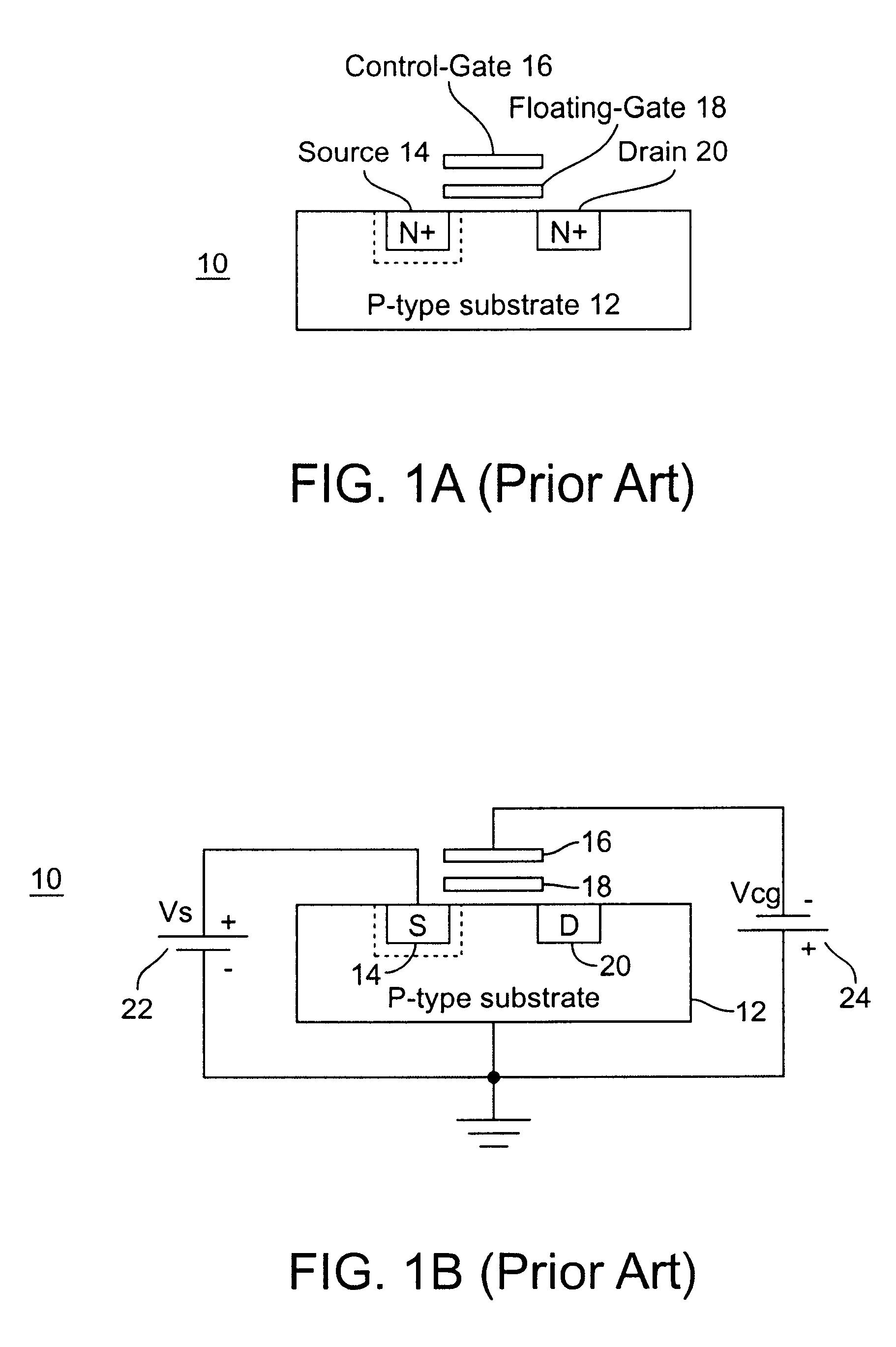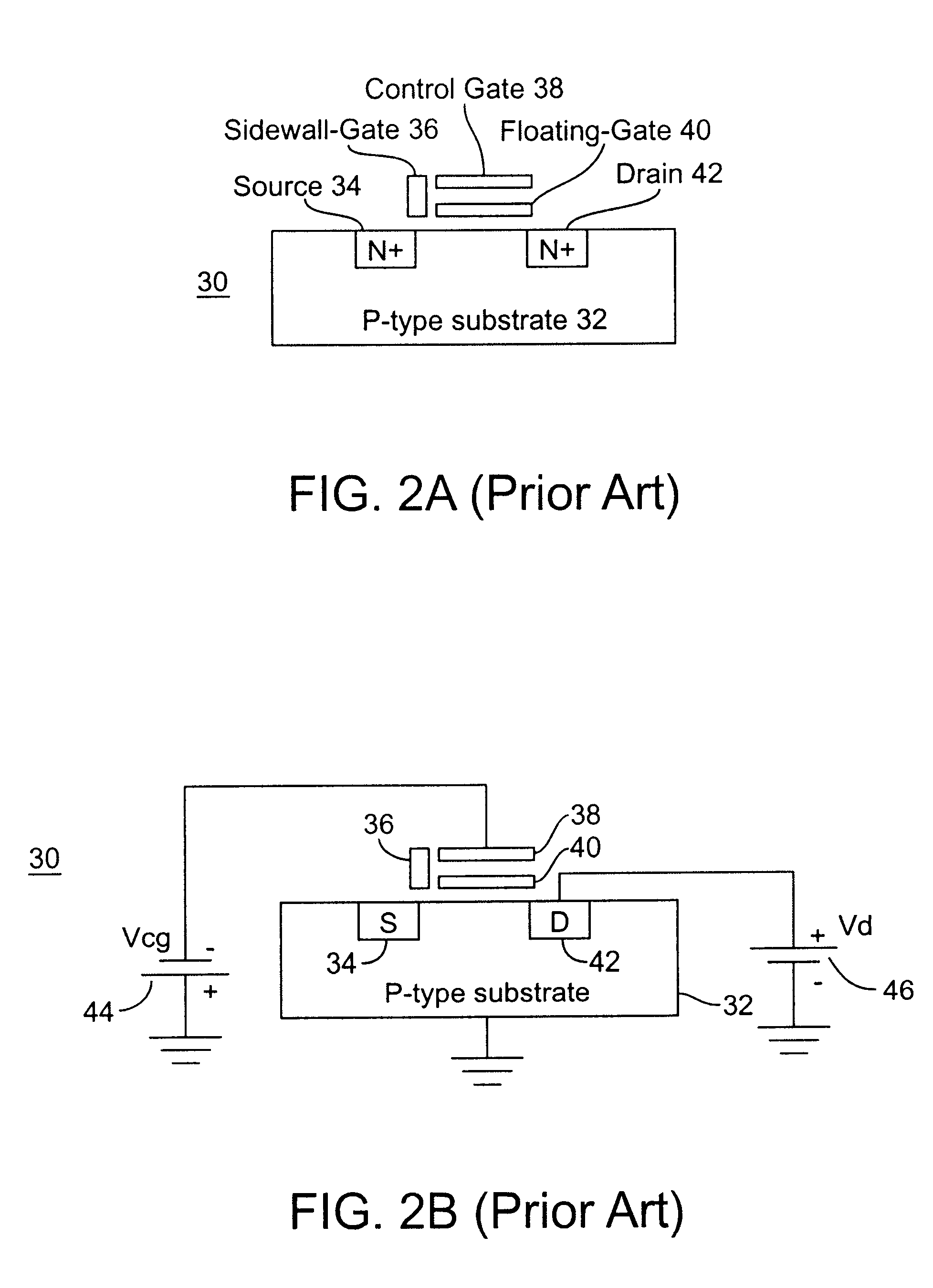Method for operating nonvolatile memory cells
a nonvolatile, memory cell technology, applied in static storage, digital storage, instruments, etc., can solve the problems of undesirable magnitude disparity between the required negative and positive voltages, voltage stress concentrated on one of the cell dielectrics, and the inability to achieve the desired effect of advanced technology,
- Summary
- Abstract
- Description
- Claims
- Application Information
AI Technical Summary
Problems solved by technology
Method used
Image
Examples
Embodiment Construction
The present invention will be first described within the context of a generic five-terminal flash memory cell. As will become clear in the following description, this invention is applicable to all five-terminal source-side injection memory cell structures, including examples as those shown in FIGS. 2 and 3. A new memory cell structure having an isolatable cell body terminal will be described, as well as the operation advantages of this cell as compared to the conventional cell structure. This particular feature of the invention is applicable to both four-terminal and five-terminal flash memory cells, as will be explained below. While the invention will be described in conjunction with the preferred embodiments, it will be understood that they are not intended to limit the invention to those embodiments. On the contrary, the invention is intended to cover alternatives, modifications and equivalents, which may be included within the spirit and scope of the invention as defined by the...
PUM
 Login to View More
Login to View More Abstract
Description
Claims
Application Information
 Login to View More
Login to View More - R&D
- Intellectual Property
- Life Sciences
- Materials
- Tech Scout
- Unparalleled Data Quality
- Higher Quality Content
- 60% Fewer Hallucinations
Browse by: Latest US Patents, China's latest patents, Technical Efficacy Thesaurus, Application Domain, Technology Topic, Popular Technical Reports.
© 2025 PatSnap. All rights reserved.Legal|Privacy policy|Modern Slavery Act Transparency Statement|Sitemap|About US| Contact US: help@patsnap.com



